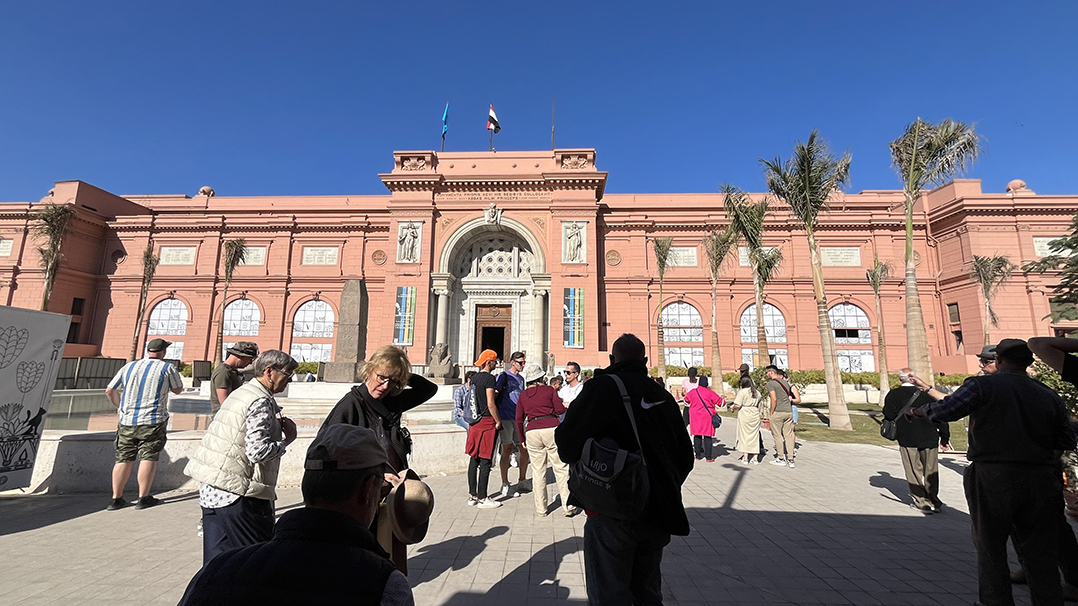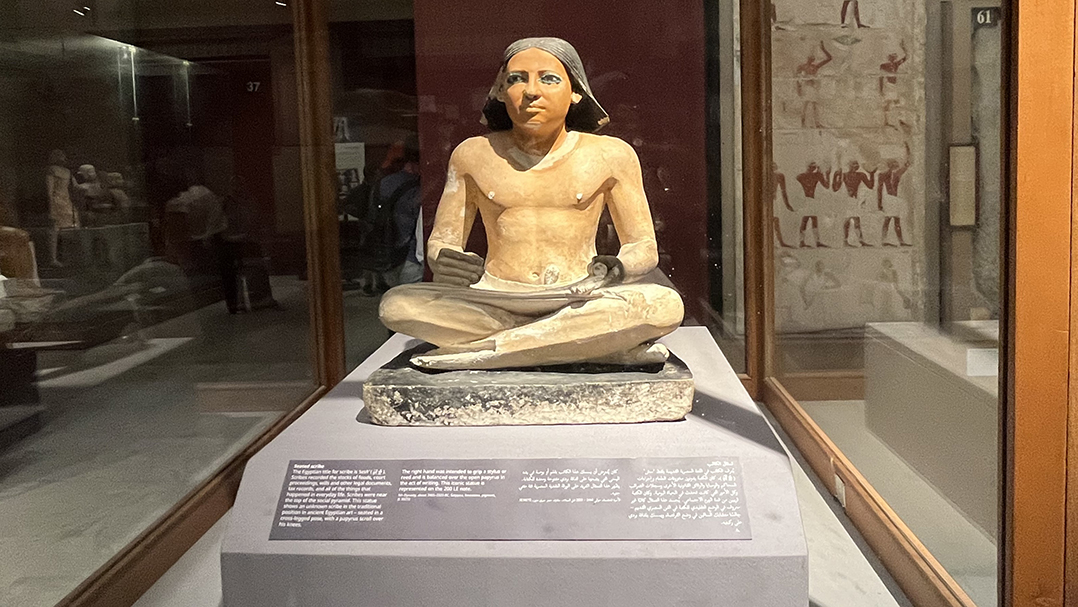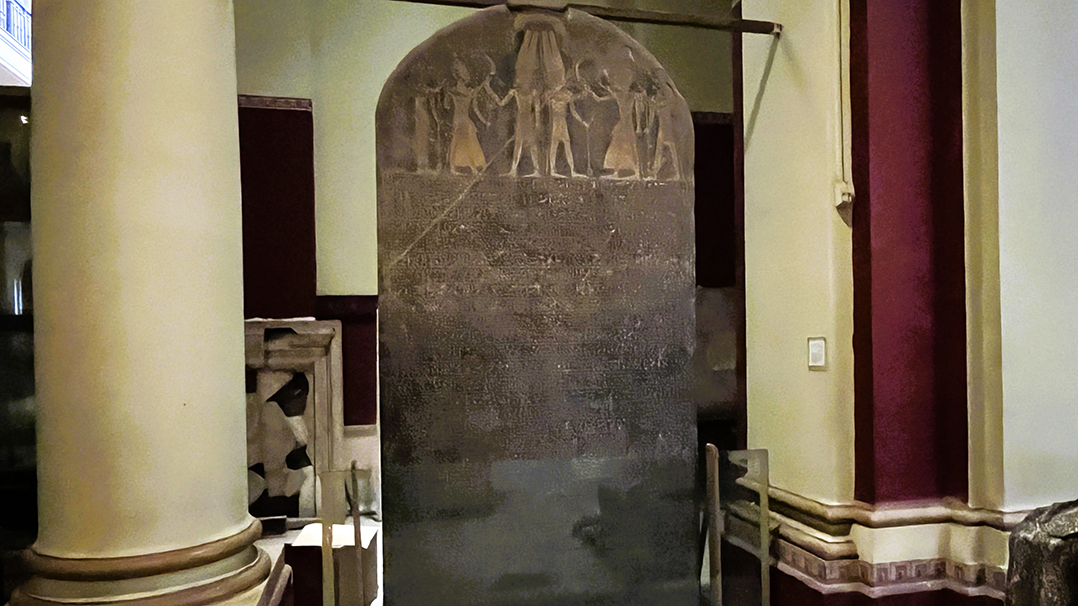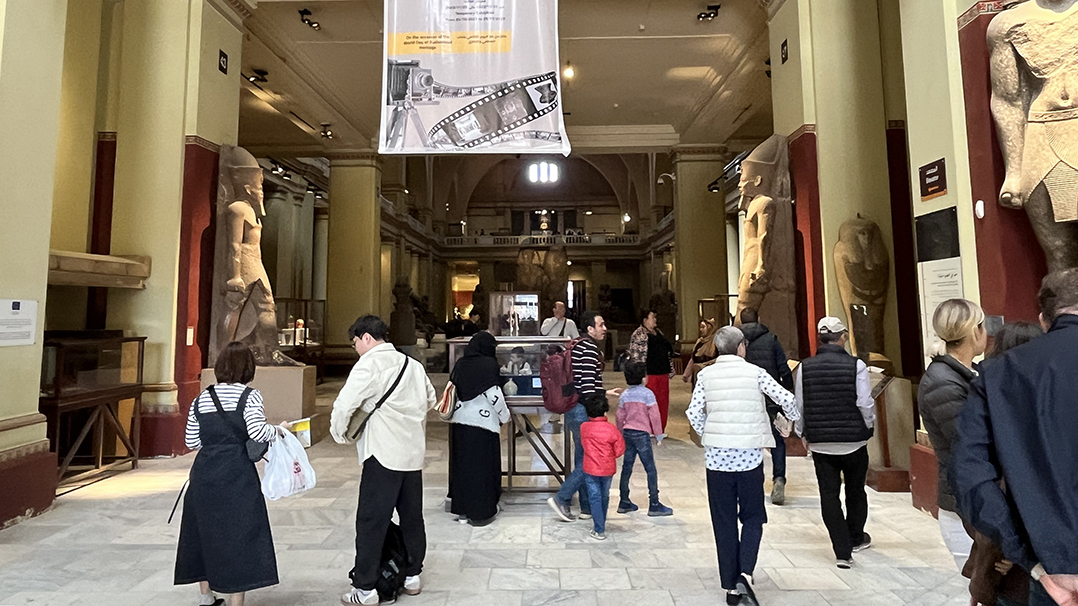In our continuing tour of Egypt, we visit the Museum of Egyptian Antiquities, usually called the Egyptian Museum, among the most iconic and perhaps most criticized museums in the world.
The Egyptian Museum was founded in 1858 in a former warehouse along the Nile River near Cairo. After that and a later location proved unsatisfactory, the museum moved to a new neoclassical-style building in downtown Cairo’s Tahrir Square. It was the first museum in the Middle East devoted to a single purpose and was, until recently, the largest museum in Africa.
The collection eventually reached about 120,000 items, only some of which could be displayed.
Today, the museum is most famous for items on the second floor, recovered from the tomb of Pharaoh Tutankhamen in 1922 (most of which cannot be photographed), including his golden burial mask. The first floor includes imposing statues of important pharaohs, including Akhenaten, who temporarily established monotheism in the 14th century B.C., and was probably the father of Tutankhamen. One of the most important first-floor items is the Narmer Palette, created from dark gray siltstone in about 3100 B.C. to celebrate the unification of Upper and Lower Egypt. The Merneptah Stele, a 10-foot-high victory monument from the late 13th century B.C., contains the earliest known nonbiblical reference to Israel. The first floor also includes a number of important painted statues, including one from about 2500 B.C. showing a cross-legged scribe preparing to write.
Long criticized for its crowded displays and sometimes incoherent organization, much of the Egyptian Museum’s collection, including at least most of Tutankhamen’s artifacts, will be transferred to the much-delayed Grand Egyptian Museum (“GEM”) near the pyramids of Giza. But most people expect the Egyptian Museum, beloved by many despite its flaws, to remain open, perhaps displaying only smaller items in a more organized fashion.








